
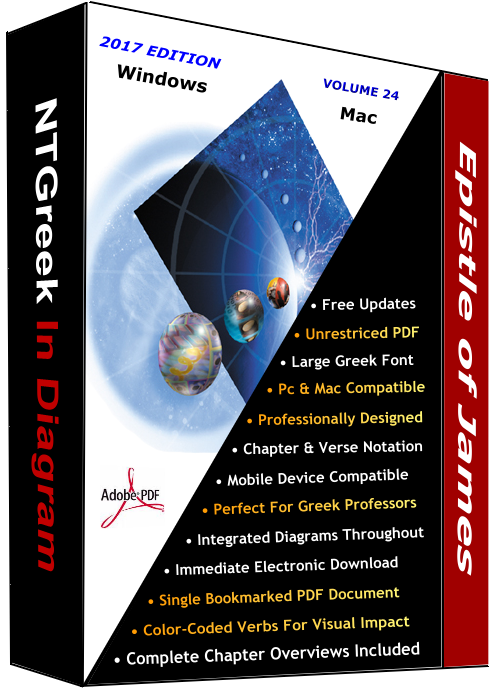
Title:
Epistle of James (1:1--5:20)Series:
NTGreek In Diagram: Volume 24Edition:
2017 EditionLast Update:
April 19, 2017ISBN-10:
1939762170ISBN-13:
978-1-939762-17-7Language:
Greek diagrams with English commentsFormat:
Downloadable PDF bookmarked documentLength:
53 pages (including overviews pages)Price:
$4.95 USDEpistle of James is known as one of the General Epistles of the New Testament. The designation is given to these letters because they were written as circular letters for reading by a number of assemblies. This is in contrast to most of the Pauline letters that were addressed to specific assemblies or to individuals.
The letter has been regarded by some as second-tier importance among the New Testament writings. Perhaps Martin Luther's overrated disparaging remarks is the cause for this, turning scholarship aside and focusing on the more famous letters in the Pauline corpus. Much has been made of "a right strawy epistle" in the commentaries of James.
We should not be surprised, however, that James in this short letter does not seek to outline all the essential doctrines of the Christian faith. Like Paul in his epistles, James addresses those who know the basics; the time was far enough removed from the earliest days of Christ that undermining attitudes and practices were beginning to appear. James speaks boldly against these evils in earnestness. He instructs, encourages, chides, denounces, and exhorts his readers everywhere to remain true to the teachings and practices of the faith.
James' vocabulary is also not basic, nor is his style. Except for the Epistle to the Hebrews his letter may be the best example of a scholarly individual whose writing abilities would challenge his contemporaries.
The Epistle of James is also part of the NTGreek In Diagram's Master Diagram, Master Diagram Upgrade, and General Epistles Collections. Every Collection includes all diagrams in a single convenient bookmarked PDF document that makes navigation incredibly easy.
If you are a Greek professor or instructor and desire more information about group discounts, please contact me. Several Greek professors and instructors encourage their students to purchase the diagrams and use them as part of the class curriculum.
The following screen shots are representative pages from the Epistle of James. The purchased diagram set includes all the diagrams. Click on any thumbnail to view its larger image.
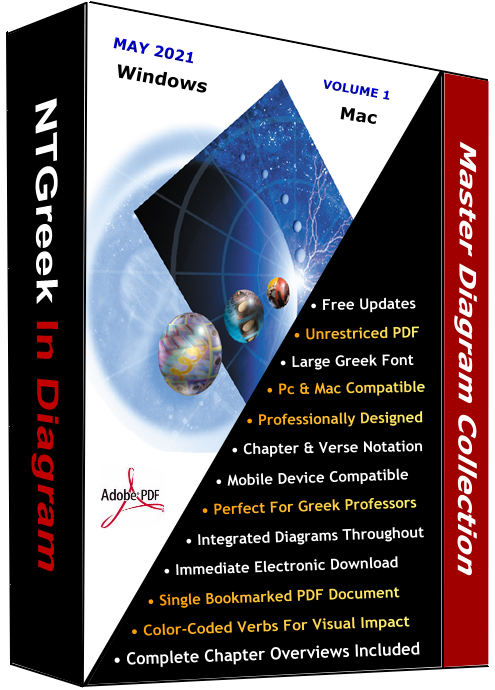
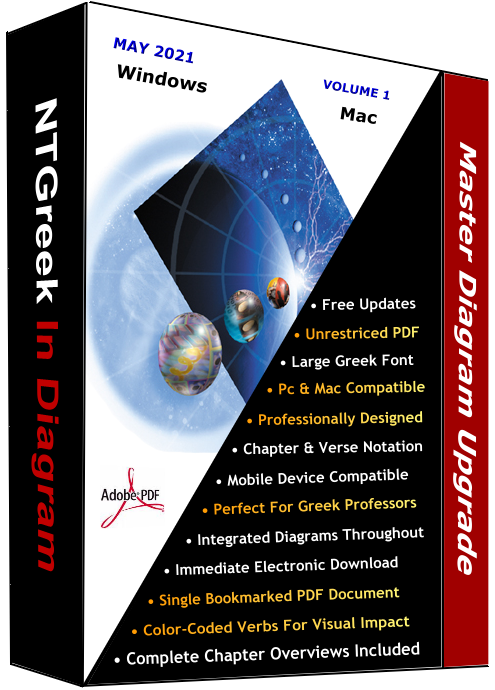
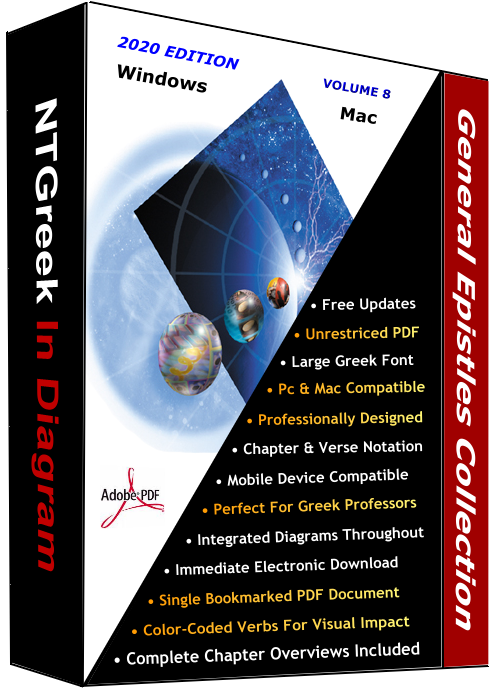
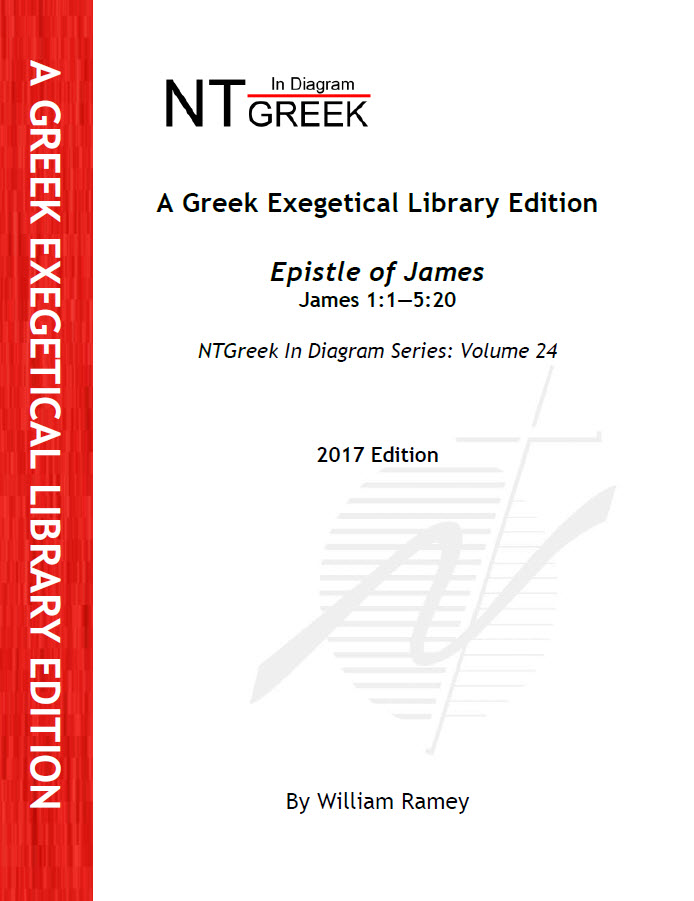
 jamescoverpage
jamescoverpage titlepage
titlepage James 1:1-3
James 1:1-3 James 1:16-18
James 1:16-18 James 2:8-9
James 2:8-9 James 2:24-26
James 2:24-26 James 3:5b-6
James 3:5b-6 James 3:13-15
James 3:13-15 James 4:4-6a
James 4:4-6a James 4:13-14
James 4:13-14 James 5:4-6
James 5:4-6 James 5:9-11
James 5:9-11